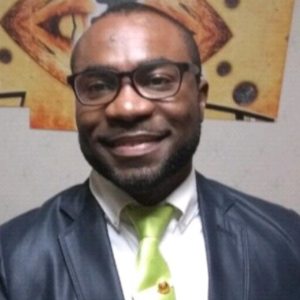Title : Optimizing electrospun biodegradable small diameter vascular graft via 3D printing reinforcement achieved a long-term patency neotissue formation in a small animal model
Abstract:
Step-wise increase in cases of patients with cardiovascular disease globally has propelled scientist in this area to develop improved commercially available artificial blood vessel with large diameter for reducing adverse responds that drive acute thrombosis and the accompanying complications. However, these materials are still meet with considerable challenges when applied in small-diameter vessels. Other approaches such as preseeding of vascular cells in the scaffold are currently the primary solution for microvasculare substitutes, but they are often met with decline in the biological activities of implanted cells as well as limitations of storage and transportation. Here we designed and optimized a biomimetic acellular small-diameter via a combination of electrospinning and 3D printing to achieve a long-term patency and tremendous remodeling in a rat aortic replacement model. Methods: A total of 10 Sprague dawley rats weighing 300-400g were used in this study with a graft of 2 mm internal diameter implanted in the abdominal aorta with no anticoagulation during fellow-up (3 months and 1 year). On explantation we compared the patency and remodeling with native vessel using angiography, ultrasound, H&E staining, fluorescence staining and scanning electron microscopy. Results: Here, we tested tubular biodegradable poly-e-caprolactone/polydioxanone (PCL/PDO) electrospun vascular grafts in a rat model of aortic interposition for up to 12 and 36 weeks. The grafts demonstrated excellent patency (100%) confirmed by Doppler Ultrasound, resisted aneurysmal dilation and intimal hyperplasia, and yielded neoarteries largely free of foreign materials. At 12 weeks, the grafts resembled native arteries with confluent endothelium, synchronous pulsation, a contractile smooth muscle layer, and co-expression of various extracellular matrix components (elastin, collagen, and glycosaminoglycan). Though there were presence of the 3D reinforcement at 12 weeks, at 36 weeks the reinforcement has degraded and absorbed leaving behind a native like vessel Conclusion: Acellular small-diameter artificial vessel appears essential in the clinical treatment of coronary heart disease and peripheral arterial disease. Here we applied a combination of electrospinning and 3D printing to fabricate a reinforced small-diameter prosthesis that achieved a long-term patency with substantial remodeling similar to native vessel at 36 weeks.
Audience Take Away:
- This study aims to minimize the overly thick layers employed by previous studies by using a 3D printer to attach a reinforcement that not only increase the burst pressure and strength but also increases the flexibility and compliance.
- Yes I guess the vascular surgeons will benefit from this research considering the challenges observed in the commercially available small-diameter vascular grafts.
- Yes, this provide a practical solution to a problem that could simplify or make a designer’s job more efficient.
- Yes, Will it improve the accuracy of a design, or provide new information to assist in a design problem.



